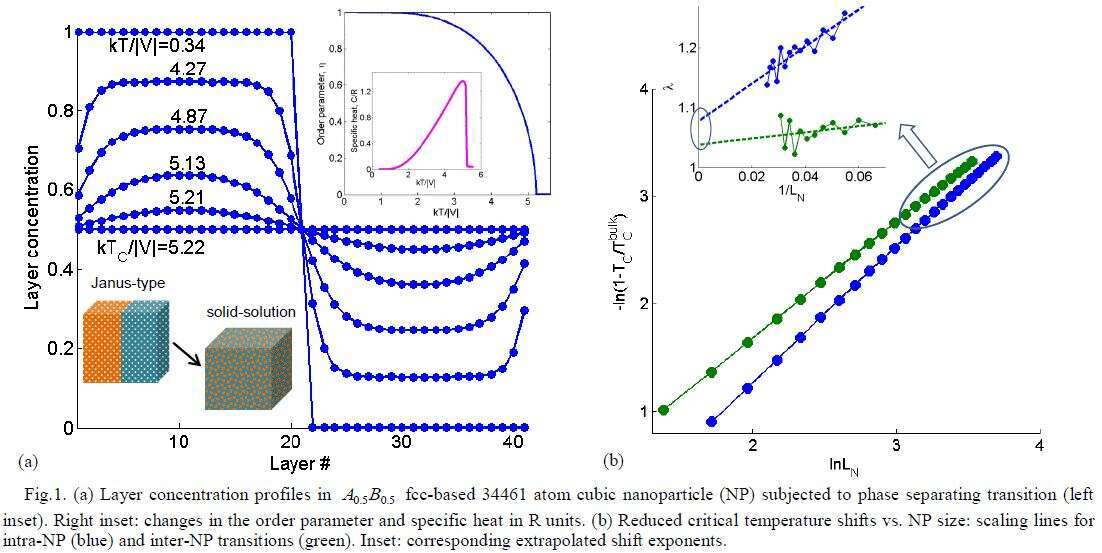
NANOPHASE SEPARATION IN ALLOY PARTICLES & FINITE-SIZE SCALING: MODELING THE DEPENDENCE OF CRITICAL TEMPERATURES ON SIZE AND SHAPE
Phase separation transitions in fcc rectangular alloy nanoparticles are modeled focusing on effects of their finite-size, shape and interface. Our new approach facilitates highly efficient computations using analytical expression for the Ising model free energy that enables to get lots of data summed up in intra and inter particle equilibrium nanophase diagrams and corresponding scaling plots. Starting as intra-separated Janus-like configuration at low temperatures, gradual intermixing leads at higher temperatures to increased interface width, corresponding to the correlation length, and ultimately to transformation to homogenous solid solution (Fig.1a). Critical temperatures (TC) generally follow finite-size scaling behavior, yet refined analysis yields some size-dependence of the shift exponents, λ. The much stronger dependence for the intra- vs. inter-particle transitions is attributed to inner interfacial effects, while presumably free surface effects alone lead asymptotically to λ≈1.0 (Fig.1b). The concomitant configurational specific-heat exhibits for intermediate sizes attenuated broad peaks that sharpen and shift for larger particles towards the bulk peak. All these original findings for alloy nanoparticles are consistent with finite-size-scaling theory predictions for other systems. Beyond that, the study reveals a universal, particle-shape independent, nano-scaling of the critical temperature shift with respect to the ratio of total-to-surface number of atoms.

Powered by Eventact EMS